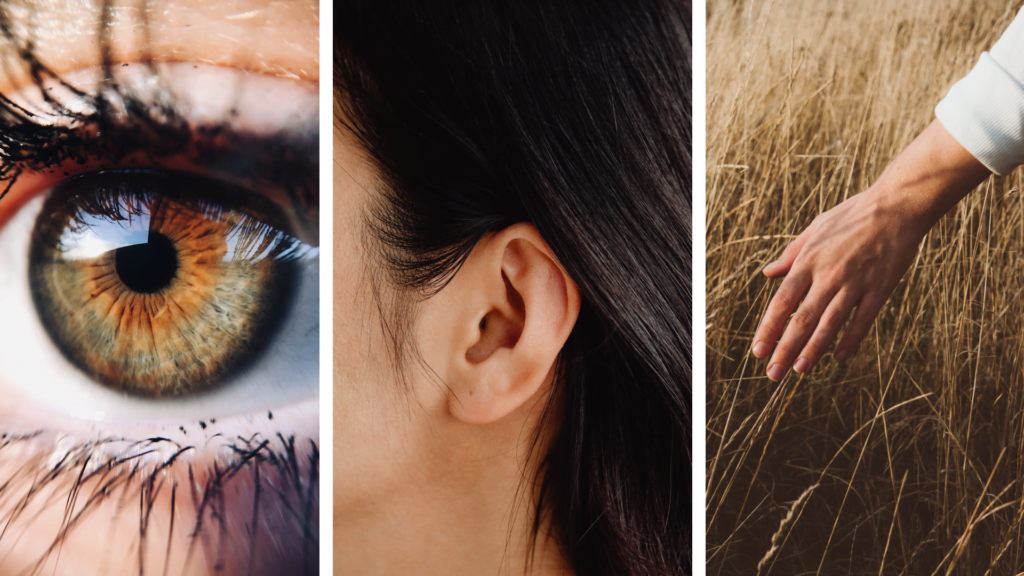The Senses Initiated Lucid Dreaming (SSILD) technique is an innovative and highly effective approach to lucid dreaming developed in 2011. It’s considered one of the most popular techniques for attaining lucid dreams, particularly within the Chinese lucid dreaming community.
The technique’s primary focus is on sensory stimulation and the cycling through visual, auditory, and tactile senses as the primary elements of induction. This cycling process conditions the mind and body into a unique state that is ideal for the spontaneous onset of lucid dreams.
The streamlined SSILD approach is designed to be easy to learn, aiming to eliminate the complexity associated with some other techniques. The ultimate goal is to experience lucid dreams naturally and consistently.
How to get started with SSILD
For beginners desiring to explore the surreal nature of their subconscious, starting with Senses Initiated Lucid Dreaming (SSILD) is an effective approach. This technique initiates lucidity through the stimulation of senses in a specific cycle.
While the 6-step process is simple, it does require patience and consistency to ensure the desired results.
Step 1: Setting the Alarm
Begin by going to bed early, preferably before 11:00 PM. Set an alarm to wake up after four to five hours of sleep.

The idea behind this is to target the REM stage of sleep, where dreams are most likely to occur, making it an ideal period for lucid dreaming.
Step 2: Wakefulness
Once the alarm sounds, gently move out of bed and allow yourself to stay awake for a brief period of approximately 5 to 10 minutes.

You can take a quick walk, stretch, or simply sit on your bed – whatever you choose, ensure that you don’t become excessively awake.
This brief interlude lies in preparing both your body and mind for the next phase of relaxation.
Step 3: Positioning
After your brief period of wakefulness, it’s time to go back to bed. As you do, find a comfortable position that is different from your usual sleep position, as this may prevent you from instantly falling back asleep.

For those who find it hard to go back to sleep, sticking to your standard position may be advisable.
Step 4: The Quick Cycle
Here is where the primary SSILD method begins – what’s known as the ‘cycle.’ This phase involves focusing on your senses sequentially.
First, you’ll focus on sight, with your eyes closed, then on hearing, and finally, on touch. For each sense, spend a few seconds focusing, repeating the cycle 4-6 times.
This quick cycle serves as a warm-up exercise for your senses.
Overview (Quick cycle)
| Sense | Repetitions | Time |
|---|---|---|
| Sight | 4-6 | 3-5 seconds |
| Hearing | 4-6 | 3-5 seconds |
| Touch | 4-6 | 3-5 seconds |
Total time: 36-90 seconds
Step 5: The Slow Cycle

After the completion of the quick cycle, you’ll now perform the cycle slowly, repeating it 3-4 times. This step is crucial.
Spend around 30 seconds on each sense this time.
During this period, you may start experiencing various types of sensory responses. However, don’t overly agonize or stress about seeing, hearing, or feeling anything extraordinary.
The key here is to gently observe and progress onto the next sense naturally.
Overview (Slow cycle)
| Sense | Repetitions | Time |
|---|---|---|
| Sight | 3-4 | 30 seconds |
| Hearing | 3-4 | 30 seconds |
| Touch | 3-4 | 30 seconds |
Total time: 90-120 seconds
Step 6: Sleep
Once you’ve completed the slow cycles, it’s time for the ultimate step – go back to the position you find most comfortable and let yourself fall asleep as swiftly as possible.
The goal here is to yield to the arms of sleep as quickly – and effortlessly – as possible. Don’t worry about whether the technique will work; your faith and patience are vital at this step. The technique’s efficacy lies in the swift transition from wakefulness to sleep following the SSILD cycle.

Remember, SSILD is an easy-to-master and highly effective lucid dreaming technique. Despite its simplicity, consistent and correct practice is key to success.
Be patient, provide yourself with the time you need to adapt, and embrace the exciting potential of your subconscious realm.
Questions about SSILD
While you technically can, it’s not typically effective. At the start of the night, your body is focused on deep non-REM sleep, which isn’t ideal for lucid dreaming. The technique is best practiced after 4 to 5 hours of sleep, to target the REM stage when dreams occur.
As a standalone technique, SSILD is designed to condition your body and mind into an optimal state for lucid dreams. Hence, mixing it with other techniques could interfere with this delicate balance and potentially affect its effectiveness. (WBTB being the exception to this, as it is inherently part of the SSILD technique).
Once you’ve mastered SSILD, feel free to experiment with additions and modifications as per your individual preference.
You don’t need to remain perfectly still during SSILD cycles. If you have an itch, feel free to scratch it. If you need to shift positions or move for comfort, do so. The idea is to remain as comfortable and relaxed as possible. Just remember to add an extra cycle if you’ve had to interrupt the current one.
It’s completely fine! The aim of the SSILD cycles isn’t to induce immediate sensory experiences but to set the stage for a potential lucid dream once you fall back to sleep. You don’t need to try too hard to feel or see something during the exercises.
If you find yourself waking up from a regular dream, don’t get discouraged. Developing lucid dreaming abilities can take time and practice. Perform a reality check to ensure you’re not in a dream, then relax, perform a few more SSILD cycles, and attempt to fall asleep. Consistency is key, and with repeated practice, you’ll increase your chances of experiencing a lucid dream.
Related Techniques
While Senses Initiated Lucid Dreaming is a highly effective method of inducing lucid dreams, there are several other techniques that can also facilitate this process. Here are a few of them:
- Wake Back to Bed (WBTB) – This technique involves waking up from sleep for a short period and then going back to sleep, aiming to enter REM sleep while still conscious, eventually inducing a lucid dream. WBTB is ususally combined with the SSILD method to target the REM-stage and enhance the results.
- Mnemonic Induced Lucid Dream (MILD) – MILD is based on prospective memory, meaning you’re training your mind to do something in the future. With this technique, while trying to sleep, you would tell yourself something like, “The next time I dream, I will remember that I am dreaming.”
- Wake Initiated Lucid Dream (WILD) – WILD is one of the more advanced techniques where you maintain consciousness while your body falls asleep. The idea is to enter a dream directly from the waking state with no perceived break in consciousness.
Getting started with SSILD tonight
If you’re feeling excited and prepared to venture into the realm of lucid dreaming, there is no better time to start than tonight.
Simply remember the steps:
- Go to bed a little earlier than usual and set an alarm to wake you after 4 to 5 hours of sleep.
- Upon waking up, stay conscious for 5 to 10 minutes before you lie back down and cycle through the senses.
- Afterwards, try your best to drift back into sleep as swiftly as possible. Don’t be discouraged if nothing happens immediately.
As with any skill, patience and consistent practice over time will yield rewarding results. Sweet dreams!
